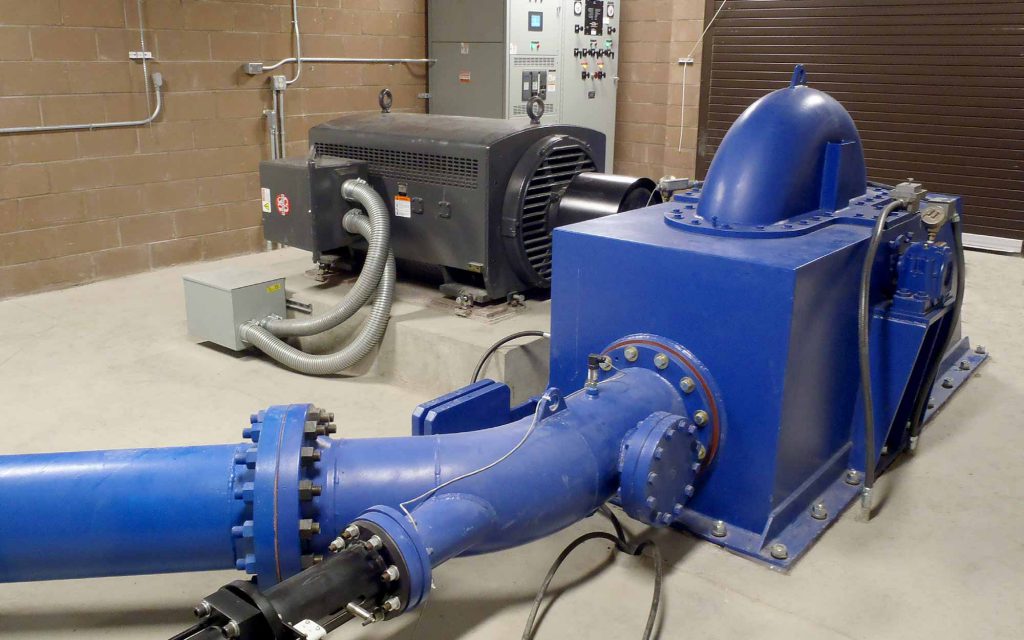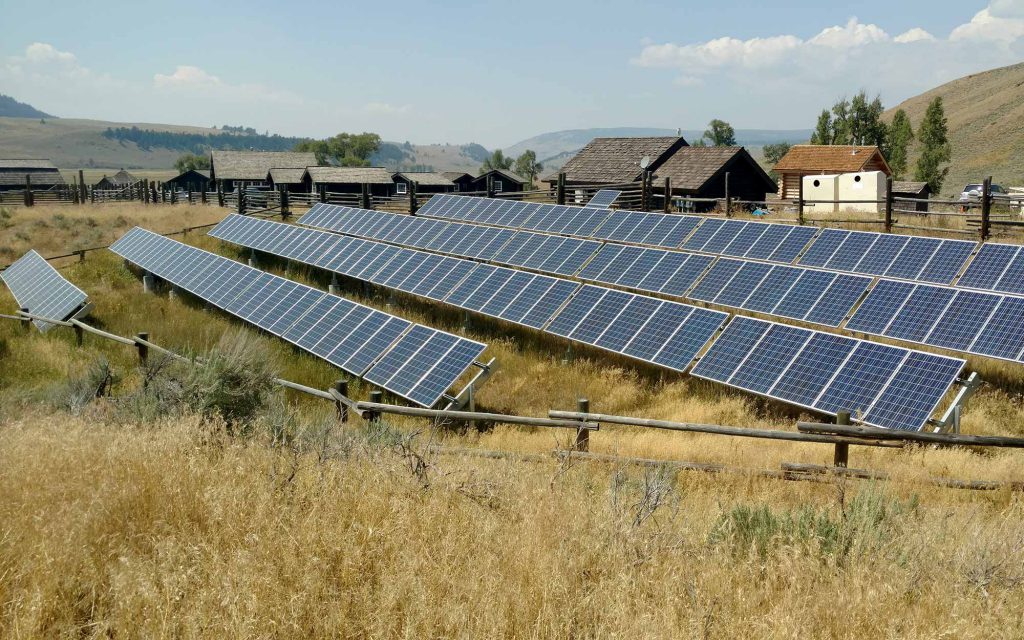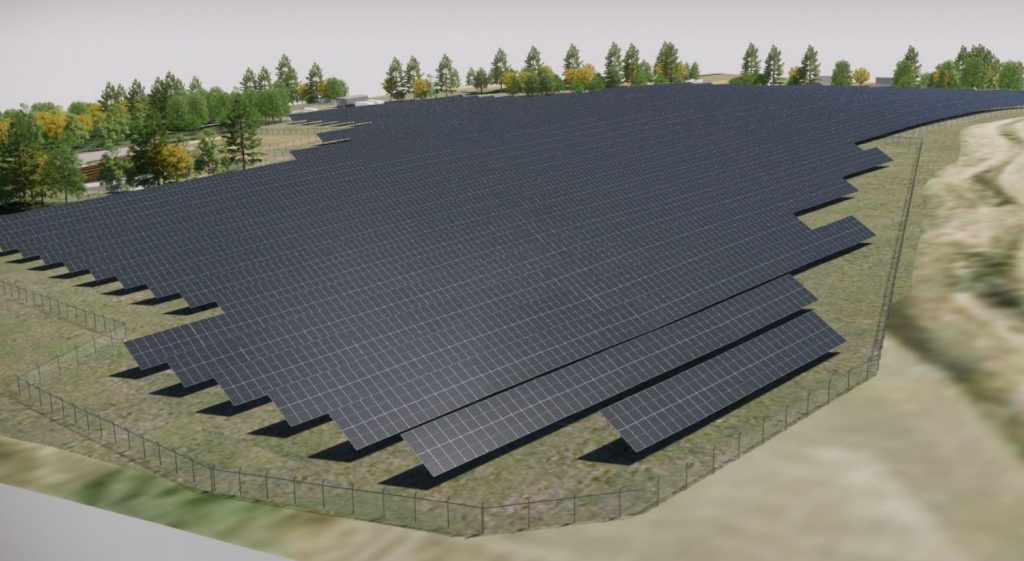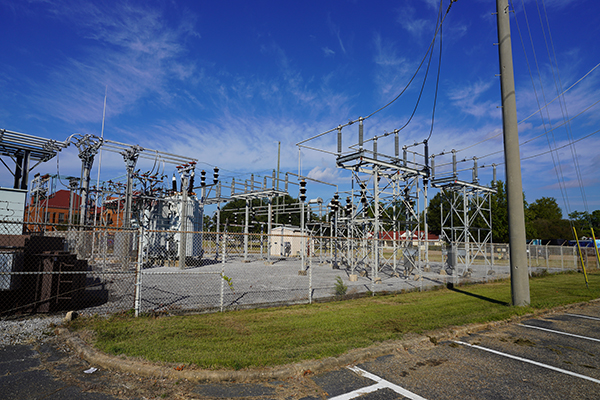By Alan Bronec and Nathan Bronec
With a traditional utility grid, electricity is generated at central power plants and transported over long distances. With few redundant paths for energy to be delivered, thousands of users can be left without power if a single part of the grid fails or needs to be repaired.
Conversely, a microgrid uses local energy sources to generate power for individual facilities or a campus of buildings. Microgrids can operate autonomously (“island mode”) or be connected to the larger utility grid, making them more adaptable and resilient. When a microgrid connects to the primary grid, it operates in parallel, matching its characteristics, such as voltage, frequency, and phase rotation. Depending on the generation capacity, in circumstances such as a partial shutdown of a central power plant, utilities can use the microgrid as a back-up generation source.
Wildfires and other natural disasters have heightened the demand for more resilient energy infrastructure. Failed power lines due to high winds can leave customers without power and, worse, cause large wildfires. Examples of this occurrence have been seen in California where wildfires devastate homes and communities too frequently. Local utilities have begun to de-energize power lines during high-wind events, which can result in hundreds of thousands of customers without power for a few hours to several days.
Microgrids have the potential to help with this situation in two ways. First, local power sources can eliminate the need for such long-distance delivery, reducing the potential for a power line to spark or short out in a dry zone. Second, if power lines do need to be shut down in anticipation of a high-wind event, the microgrid can switch to island mode instead of relying on the primary grid to continue providing power.
In October 2019, Coast Guard Training Center Petaluma, north of San Francisco, lost utility power for more than five days during the Kincade Fire. The base responded by embarking on a multi-year project to install a base-wide microgrid system and battery energy storage system—the first of its kind across the service.

RELYING ON POWER
Wildfires are not the only natural disaster that demonstrates the fragility of the utility grid. With more frequent high-impact storms, aging traditional energy infrastructure can be damaged or destroyed. It can take anywhere from a couple of days to several weeks to restore power. Microgrids that operate independently from the primary grid, however, can continue operating.
Microgrids rely on different core energy sources for power. These options carry varying capabilities and benefits, and also offer higher value in some geographic areas.
Micro-hydropower. A micro-hydropower system consists of a turbine, pump, or waterwheel to turn the energy of flowing water into electricity. These systems can generate as much as 100-KW of electricity, while a 10-KW system can generally power a large home, small resort, or hobby farm.
Solar photovoltaic. A photovoltaic microgrid system comprises a series of solar panels, inverter, and other hardware that use energy from the sun to generate electricity. Photovoltaic systems can range from small, portable systems to utility-scale generation plants.
Combined heat and power. Cogeneration generates electricity and captures the heat for use as thermal energy, such as steam or hot water. This thermal energy can be used for space heating, cooling, domestic hot water, and industrial processes. The most common combined heat and power configurations are combustion turbine (or reciprocating engine) with a heat recovery unit or steam boiler with a steam turbine.
Biomass systems. Organic material can be processed and burned to produce energy. The high-pressure steam produced by these plants drives a turbine generator to make electricity. After it is used by the turbine, the lower pressure steam can heat a building. Biomass systems supporting a microgrid work great in colder climates or in buildings that have a constant need for hot water.
Battery energy storage. A battery energy storage system stores electrical energy that can be used at a later time. Battery energy storage systems use a controller to perform tasks such as peak shaving and load shifting or serve as a temporary back-up power source based on system needs. They pair well with intermediate generation sources like solar photovoltaic systems.
Hydrogen storage and generation. This microgrid system uses excess energy to power an electrolyzer and generate hydrogen from water. The hydrogen can be stored and used to create energy later on using either a fuel cell or gas turbine. Not as efficient as battery storage systems, it can still effectively store energy for long durations.
Pumped hydro storage. Pumped hydro uses a turbine in conjunction with an upper and lower reservoir. During times of excess energy production, the turbines can spin backward, pumping water to an upper reservoir. When there is a need for more energy on the grid, this process is reversed so water runs from the upper reservoir to the lower reservoir while passing through the turbine, causing it to spin and generate power. This storage method accounts for roughly 95 percent of the utility-scale storage in the United States.

TYPES OF MICROGRIDS
Off-Grid/Remote. Off-grid microgrids always operate in island mode due to a lack of electrical infrastructure from the utility grid. Historically, these systems ran mainly on diesel or propane; more recently, renewable power sources such as solar are not only more common but also more sustainable, economic options when paired with a battery storage system.
Grid-Connected. As defined by the Department of Energy, grid-connected microgrids are a group of interconnected customer loads and distributed energy resources within clearly defined electrical boundaries. These microgrids act as individual, controlled entities that can connect and disconnect from the primary grid.
Networked/Nested. Networked microgrids are intended to serve a large geographic area. They consist of separate distributed energy resources that are connected to the same utility grid circuit segment. These nested microgrids are usually managed by a supervisory control system that coordinates all member segments.
OFF-GRID LOCALES
Some microgrids are not attached to a larger grid at all. For example, the Lamar Buffalo Ranch power system, designed by Cushing Terrell, in Yellowstone National Park, Wyo., uses a solar photovoltaic array, micro-hydro turbine, recycled nickel-metal hybrid car batteries, and a small propane back-up generator. The project was sponsored by Toyota in an effort to find a secondary use for hybrid car batteries after they reached the end of their life in a vehicle. It is 100 percent off-grid.
While not all microgrids are considered greener (many are powered by diesel generators), more organizations are using renewables to power theirs. Environmentally friendly energy sources such as wind and solar are variable, based on weather patterns and schedules; however, when paired with the central grid or integrated into a form of storage (batteries, pumped hydro, or hydrogen), the swings that can occur with renewables are balanced out.

EMERGING OPPORTUNITY
Another emerging area of opportunity for microgrids is electric vehicle charging stations. Electric vehicular charging structures—especially fast chargers—can exceed the capacity of utility substations and distribution lines; as a result, utilities may need to update distribution infrastructure to meet this increased demand. Microgrids are especially important as organizations electrify their vehicle fleets. If the existing grid cannot accommodate the energy loads necessary to power a fleet, microgrids can help with power availability while offering cost control and predictability. Additionally, microgrids can ensure that a percentage of the power going into these fleets is from renewables or low-carbon sources.
More News from TME
-

Electrifying Solutions for Military Installations
As military installations implement electrification measures into the future, the challenges they face will not just require innovative technology solutions but embracing a holistic delivery approach implemented early in projects. -

Providing Benefits Through Adaptive Reuse of Federal Assets
Reconfiguring existing sites or buildings for a new mission has many inherent advantages to solve challenges that face federal entities, but key considerations need to be accounted for in order to maximize value. -

Driving Resilience Decisions Through Better Data
The Air Force Office of Energy Assurance is demonstrating how a new iteration of resilience assessments can better target and quantify potential vulnerabilities in energy security—bolstering national defense by supporting more informed decisions on resilience improvements at installations.